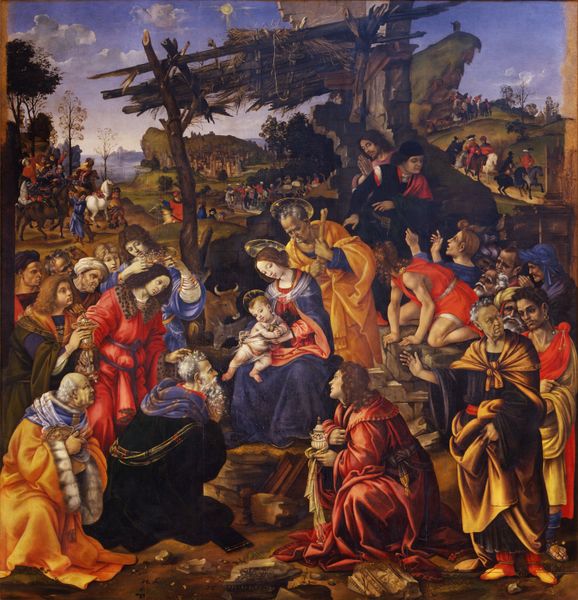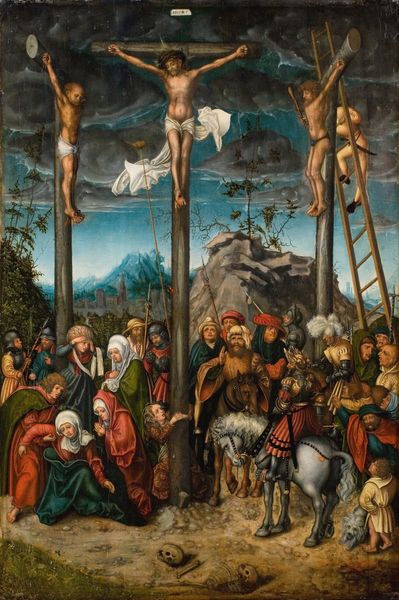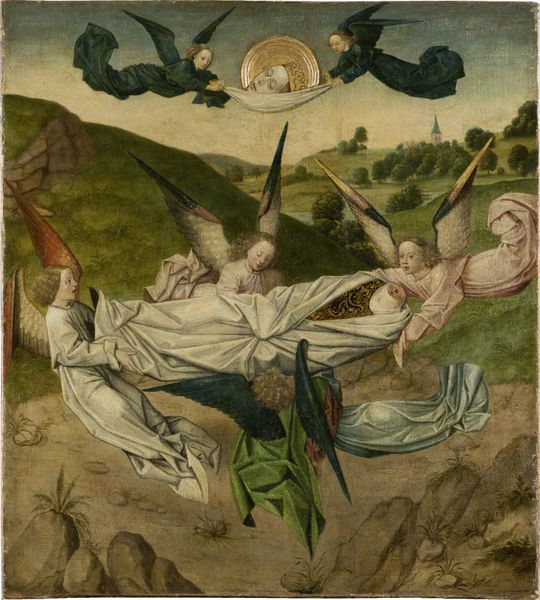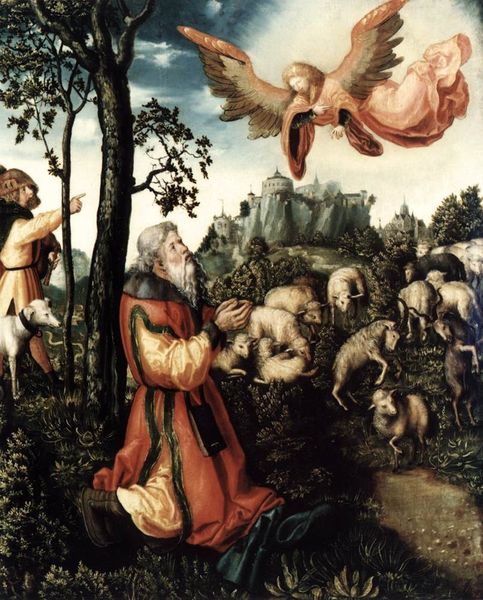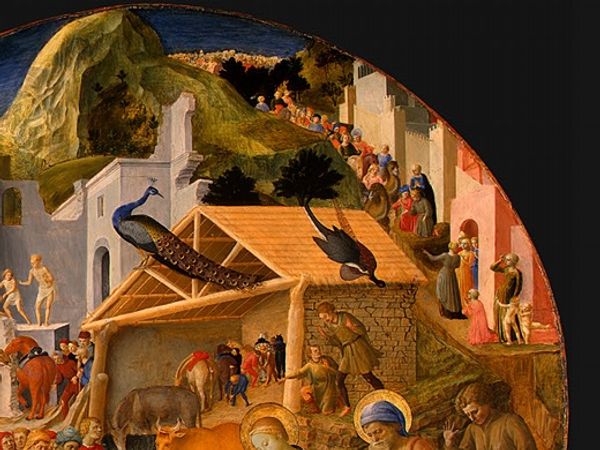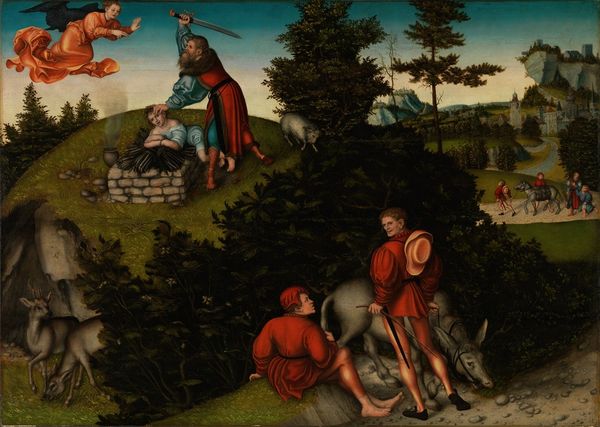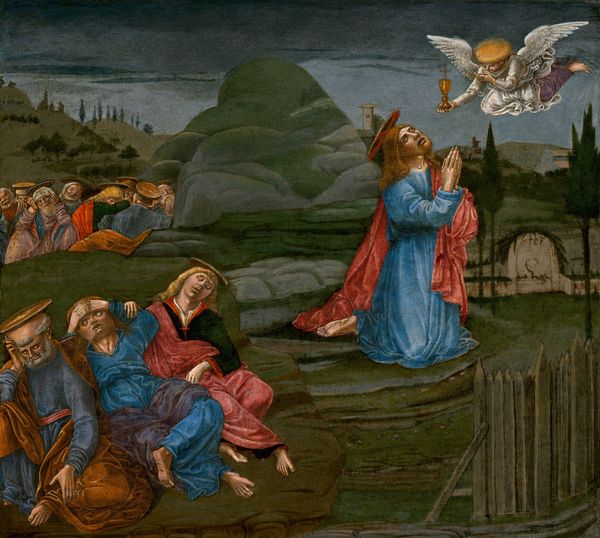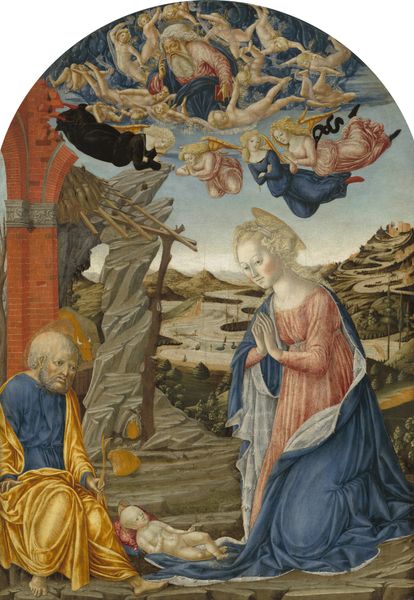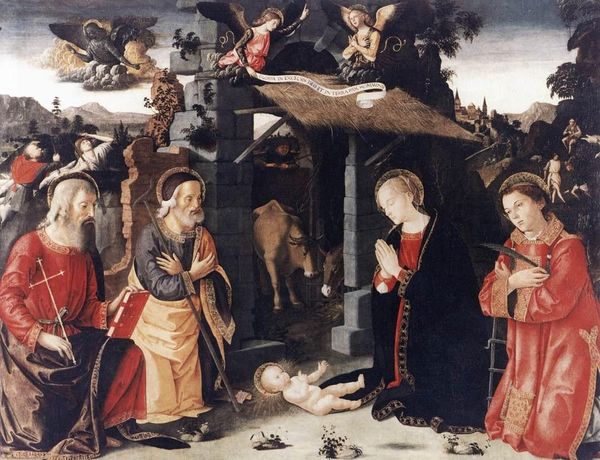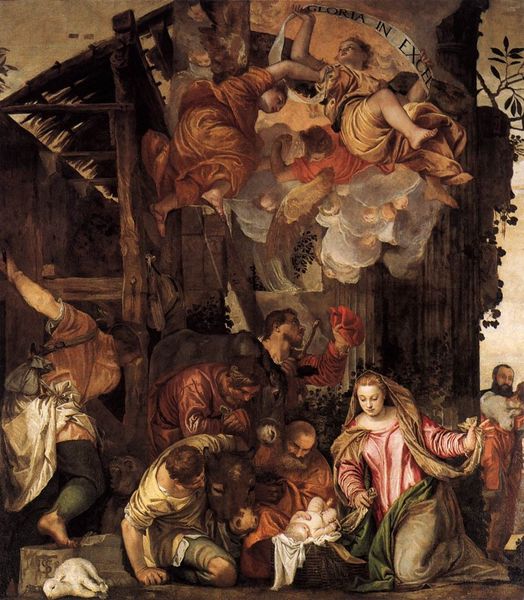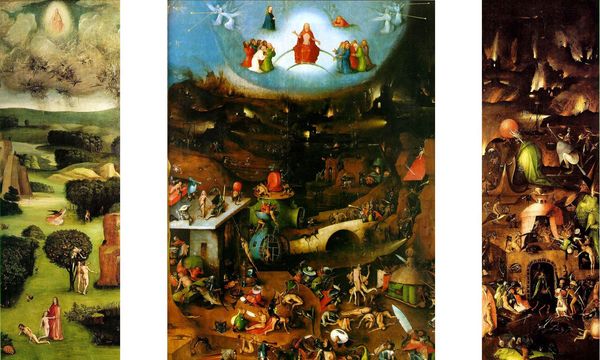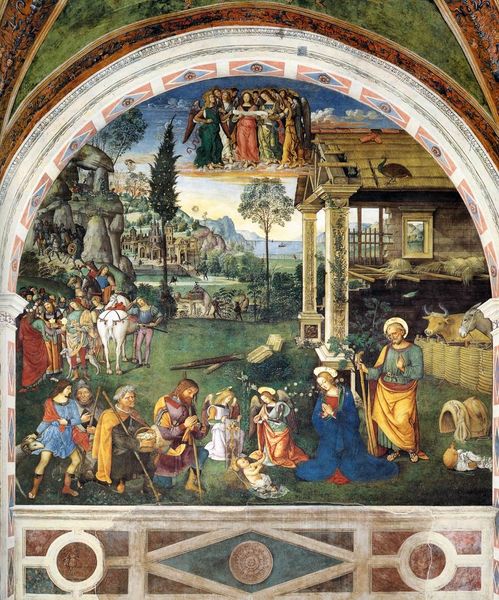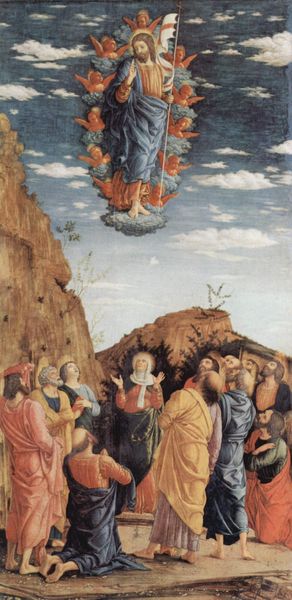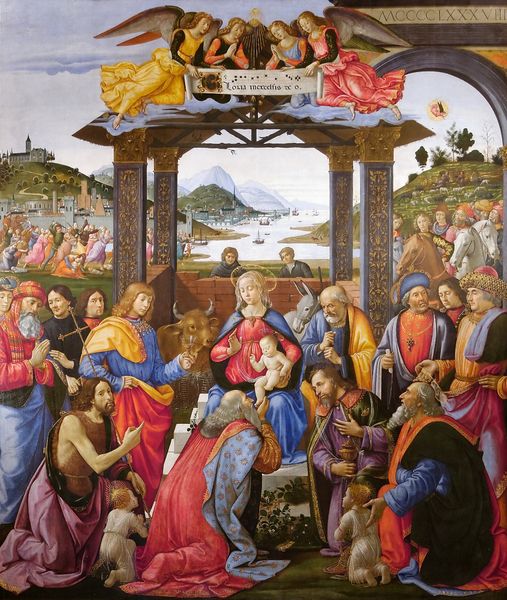
painting, oil-paint
#
painting
#
oil-paint
#
landscape
#
figuration
#
oil painting
#
arch
#
naive art
#
history-painting
#
italian-renaissance
#
early-renaissance
#
angel
#
christ
Dimensions: 109 x 75 cm
Copyright: Public domain
Curator: Take a moment to look at Sandro Botticelli's "The Mystical Nativity," created around 1501. It's a vibrant oil painting currently housed in the National Gallery in London. Editor: It strikes me immediately as rather unsettling. There’s a flatness to the perspective, almost like naive art. The tiers feel stacked, and the palette, though bright, has a strange tension. Curator: That unease is intentional. Botticelli painted this during a period of intense religious fervor in Florence, influenced by Savonarola's apocalyptic sermons. The painting is packed with symbolism relating to the end times. Editor: I see. Tell me more about these symbols, and the unusual composition… Why that frieze of angels overhead? Curator: Those aren't just decorative angels; they are symbols. The twelve angels dancing above represent peace, embodying the reconciliation of heaven and earth after the coming of Christ. Below them on the roof we see the holy family attended by other angelic figures. Then below them the events on earth seem to play out. The figures at the bottom embracing, these are angels reconciling humans, perhaps an announcement of Christ’s coming and ultimate return and judgement. The Latin inscription overhead is also quite clear about the coming of difficult times. Editor: The colors chosen for their garments is especially strange… The flat rendering feels… deliberately awkward. He’s forgoing all the developments of High Renaissance naturalism, going in almost an opposite direction. Curator: Precisely! This consciously departs from the classical harmony associated with earlier Renaissance works. It reflects a deep sense of crisis. Each element – the golden light, the hierarchy of scale, even the agitated expressions – underscores the profound spiritual weight of the event. Botticelli seems to emphasize a symbolic register over an earthly realism. Editor: So, a turning away from earthly aesthetics to represent a more divine, urgent message. Knowing this background transforms my viewing experience entirely. It's less a celebration and more a warning rendered in paint. Curator: And it reveals Botticelli's personal anguish—a testament to how art can be both a reflection of its time and an intimate expression of the artist's soul. Editor: Now, the formal oddities make perfect sense in service of its message, leaving me with a deeper appreciation for Botticelli's vision and vulnerability in the piece.
Comments
No comments
Be the first to comment and join the conversation on the ultimate creative platform.
